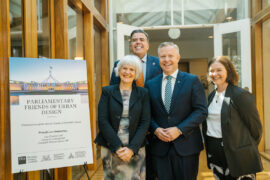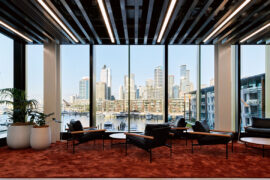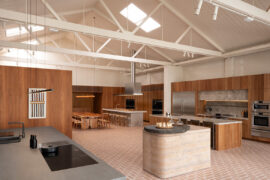Millions of people are needlessly suffering because approximately a fifth of the world’s population does not have access to electric light, Royal Philips (NYSE: PHG, AEX: PHIA), the global leader in lighting, warns. More than 1.3 billion people are trapped in light poverty as they don’t have access to electricity. Most of those affected resort […]
January 23rd, 2015
Millions of people are needlessly suffering because approximately a fifth of the world’s population does not have access to electric light, Royal Philips (NYSE: PHG, AEX: PHIA), the global leader in lighting, warns. More than 1.3 billion people are trapped in light poverty as they don’t have access to electricity. Most of those affected resort to kerosene lamps and candles to light their homes and businesses. But these primitive light sources claim the lives of 1.5 million people every year through respiratory illnesses and fires – the same number killed annually by HIV-related diseases.
The warning comes as the UN marks the launch of its International Year of Light (IYOL). The global initiative will see the United Nations Educational, Scientific and Cultural Organization (UNESCO) bring together a large consortium of stakeholders. Included are scientific societies and unions, educational institutions, technology platforms, non-profit organisations and private sector partners. Throughout 2015, they will highlight the impact of light on social and economic development.
Light poverty affects huge swathes of Africa, Asia and South America with as few as 1.5% of people in South Sudan provided access to electric light. In many developing countries, electrical grids are unviable due to the geographic and financial constraints of linking hundreds of remote communities. However, solar LED technology can provide light at a fraction of the cost of running kerosene lamps, without any of the health, safety or environmental dangers – or the need for major investment in infrastructure.
“Human suffering on this scale is unacceptable in the 21st century,” said Eric Rondolat, CEO of Philips Lighting. “Solar-powered LED lighting can transform rural communities and save millions of lives. What’s more, it does not have to be invented – it already exists and is proven. I call on politicians to stand together and commit to ending light poverty by 2030.
“The economic case for taking action is irresistible – light is essential for human prosperity. Lifting 1.3 billion people out of light poverty would not only end this stranglehold on economic, social and cultural development but would also bring a boost to global GDP.”
A single solar-powered LED lantern uses zero energy and can fill a room with clean, electric light for an approximate one-off cost of US $10-20, compared to the US $50 approximate annual fuel bill of running a kerosene lamp. On a larger scale, energy efficient LED luminaires and solar panels can be combined to produce sustainable lighting in public places and bring communities to life outside of daylight hours. These Community Light Centers (CLCs) allow healthcare services and businesses to operate after sunset as well as encouraging sports and other social activities. Philips is in the process of installing 100 CLCs across 12 countries in Africa, where some 500 million people do not have access to light.
Philips
philips.com
INDESIGN is on instagram
Follow @indesignlive
A searchable and comprehensive guide for specifying leading products and their suppliers
Keep up to date with the latest and greatest from our industry BFF's!

London-based design duo Raw Edges have joined forces with Established & Sons and Tongue & Groove to introduce Wall to Wall – a hand-stained, “living collection” that transforms parquet flooring into a canvas of colour, pattern, and possibility.

The undeniable thread connecting Herman Miller and Knoll’s design legacies across the decades now finds its profound physical embodiment at MillerKnoll’s new Design Yard Archives.

Following a recent panel discussion during Melbourne Design Week, Collectivity Talks Founder, Genevieve Brannigan sat down with Sally Evans, Director of Graphic Design and Product Development at Nexus Designs, to interrogate the role of biofabrication.

Inner city Melbourne has many beautiful locales and highly sought after suburbs in which people want to live, but few are so pretty as the beachside suburb of Elwood. An established suburb, Elwood has become a hub for those who appreciate parklands and the beach while still wanting to immerse themselves in the social interaction to be found at nearby cafes, restaurants and speciality shops. And the Elwood House is the perfect example of this suburb’s popularity.
Gaggenau held the first-ever White Truffle Hunt in Singapore, and possibly the world, on Thursday 27 October. The event was conceived to celebrate the launch of the CX480 full surface induction hob. 5 lucky winners and their guests were picked to experience a truffle-centric journey of the senses, which culminated in a gala dinner on the rooftop of Customs House.
The internet never sleeps! Here's the stuff you might have missed

The Parliamentary Friends reconvened at Parliament House, uniting political and professional leaders to champion architecture and design.

Warren and Mahoney’s design for Beca’s Auckland headquarters turns the mechanics of engineering into poetry, rethinking how workplace design can reveal its own systems.

The Fisher and Paykel Melbourne Experience Centre by Clare Cousins Architects with Fisher and Paykel Design and Alt Group has been awarded The Retail Space at the INDE.Awards 2025. As a winning project, it redefines the possibilities of retail architecture by creating an immersive, material rich environment shaped by place, culture and craft.